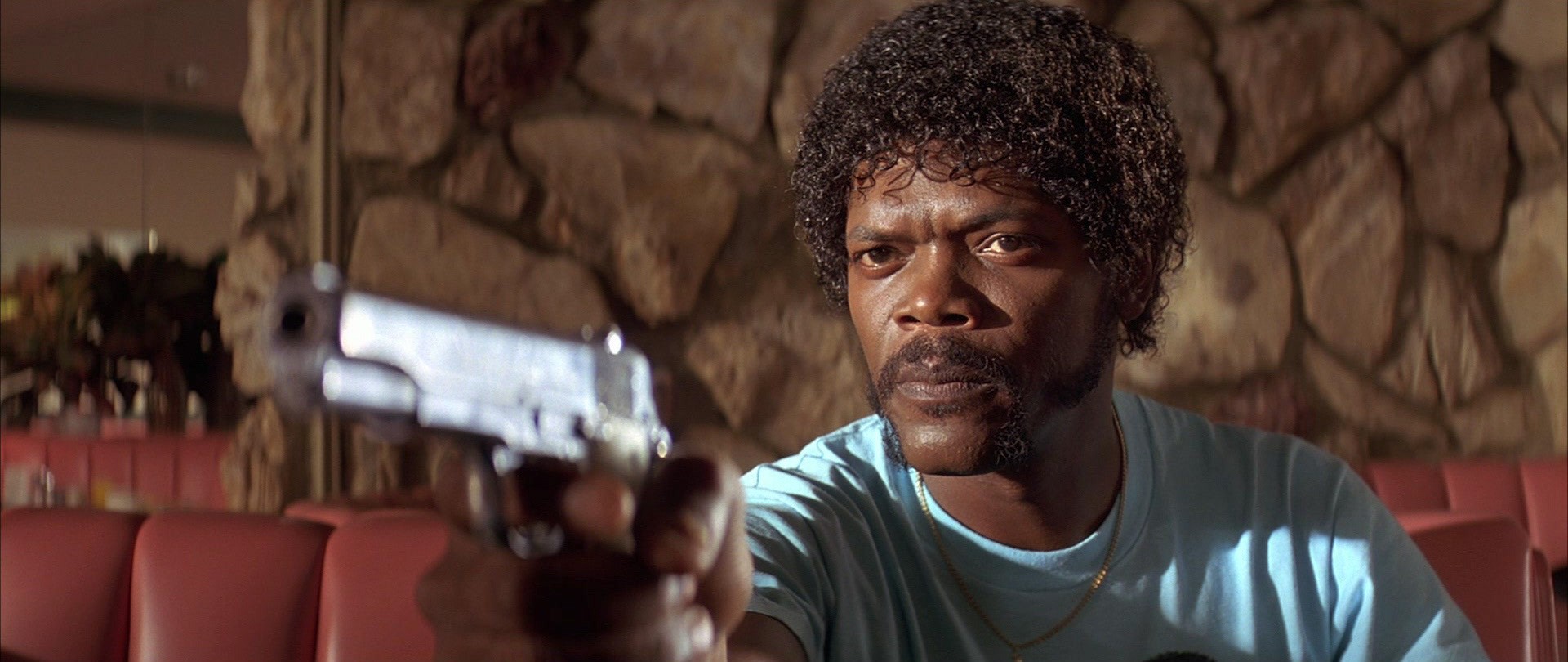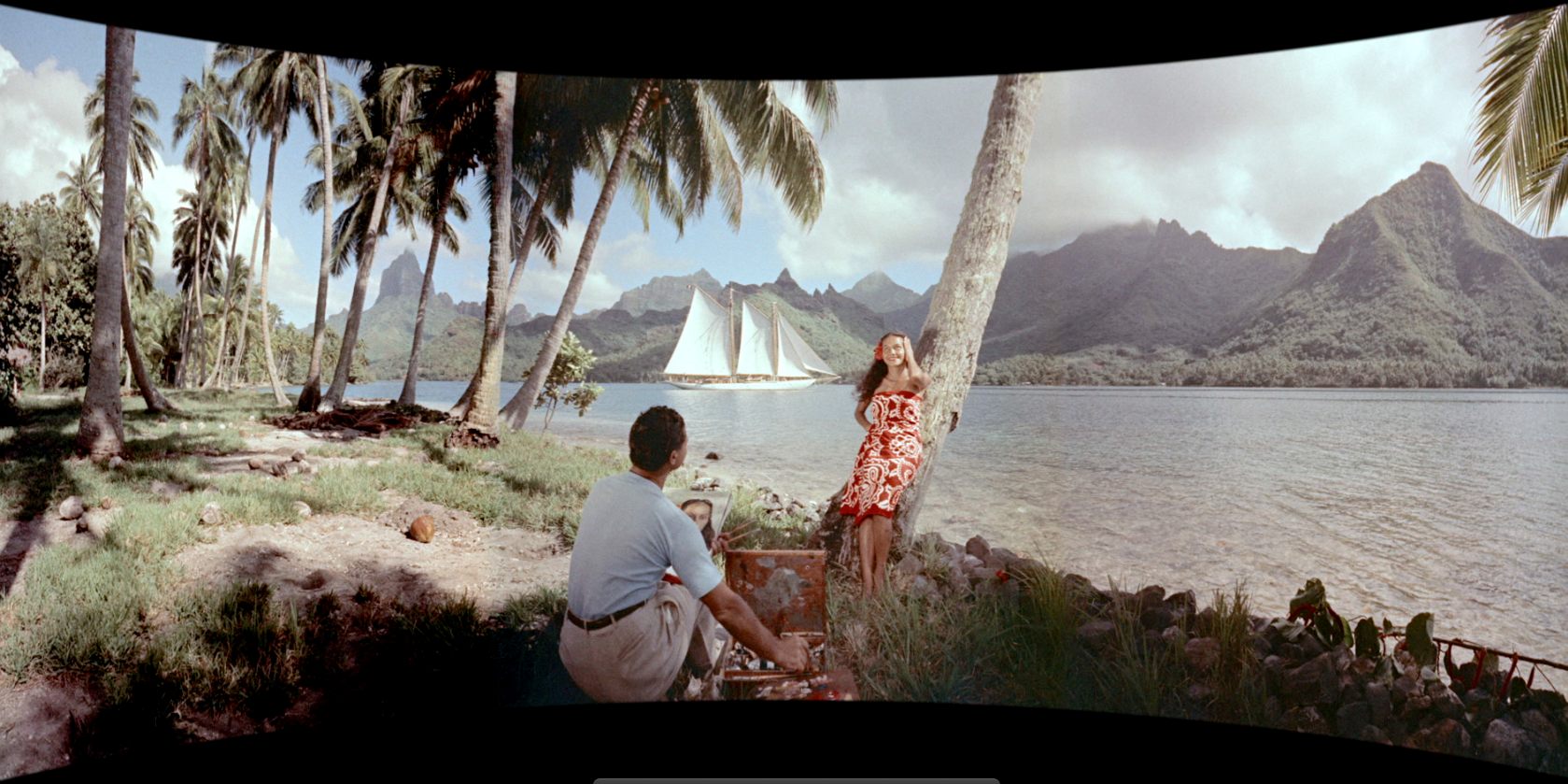“As far as I’m concerned, digital projection is the end of cinema.”
—Quentin Tarantino, Cannes 2014
These are some harsh words coming from the auteur-director; however, they do echo the sentiments of many a passionate cinema-goer now that film-viewing is becoming an increasingly on-demand experience.
However, Widescreen Weekend’s commitment to analogue film ensures that the tradition of the classic cinema experience will live on! Print film comprises a total of 16 and a half of the 24 screenings on offer—I’ll explain the half later—and with a 25th anniversary screening of Pulp Fiction on 35mm, there’s more than enough to keep Quentin Tarantino happy.

So what is the director’s problem with digital? I believe it’s less of a problem with digital as such. He has been quoted as saying that digital gives upcoming film-makers an easy starting point, but that established film-makers have no excuse. His love seems to stem more from the actual process of using film stock. When speaking about Kodak’s re-release of Super 8 in 2016, he said:
“When you’re filming something on film you aren’t recording movement, you’re taking a series of still pictures and when shown at twenty-four frames per second through a lightbulb, that creates the illusion of movement. That illusion is connected to the magic of making movies.”
To me this reminds me of why I love books and records. It’s about a tactile experience and a feeling of connection to something that helps ease you into the full immersion great media can provide. As well as the appreciation that comes from seeing media the way its creator intended.
Quentin backs his words up. Of the nine movies in the series he has created seven were shot on 35mm. The Hateful Eight was shot on Ultra-Panavision 70, a feat not done for over 40 years. His latest feature, Once Upon a Time in Hollywood, was shot on a collection of 16mm, 35mm and 8mm and saw distribution in digital, 35mm and 70mm formats. This film also displays a clear love of the widescreen era of film, with the poster showing Hollywood’s iconic Cinerama Dome and glimpses of classics such as Krakatoa and 2001: A Space Odyssey.
On top of this dedication to the medium, Quentin was also among a handful of high profile directors, including JJ Abrams, who lobbied a deal between Kodak and studios to keep production of film alive. In 2015, Disney, Fox, Paramount, Sony, NBC, Universal and Warner Bros all pledged to continue buying film stock from Kodak. If all that wasn’t enough, Quentin personally purchased the New Beverly Cinema in Los Angeles in 2007 to save the 1920s building it was housed in from redevelopment and took a step further in 2014 by taking over full programming duties.
So Quentin has a strong passion for the medium, that much is clear. However Tarantino is just one among thousands of print enthusiasts, many of whom have been gathering at the museum for the past 23 years to attend our special Widescreen Weekend. This year we’ll be treated to four 70mm prints, nine 35mm prints and two opportunities to view 3-strip Cinerama. On opening night, Steven Spielberg’s adaptation of Ready Player One—a fantastic future sci-fi fantasy, pop culture smorgasbord of a movie—will be screened from a 70mm print. We’ll also have the opportunity to see West Side Story, The Sound of Music and Murder on the Orient Express on 70mm, an experience that any fan of big, bold cinema surely should not miss.
This year, Widescreen Weekend will also be comparing the advantages of digital restoration vs. original prints. In a (potentially controversial) first for the festival, the first half of Cinerama’s South Seas Adventure (1958) will be shown in its original format—3-strip Cinerama—and after the intermission the second act will continue from a digital restoration (thus, sixteen and a half print screenings).

For the festival’s Celluloid Saturday, meanwhile, digital is banished and festival-goers can enjoy a whole day of film on film. Highlights include a return to Cinerama with a beautiful Renault advert from 1959—great for any first-time viewers of the 3-strip process. Murder on the Orient Express (2017) and The Sound of Music (1965) will both be shown in 70mm, with the latter getting the curved screen treatment. Of course we shouldn’t forget Quentin’s Pulp Fiction being shown in his preferred format of 35mm.
And all the rest! Pillow Talk (1959), Barabbas (1961), The Haunting (1963), and a personal favourite of mine, Blade (1998), will all screen in 35mm on Saturday. And the print offering for Sunday will include The Iron Giant (1999) in 35mm and a special in-conversation event with producer Donald Rosenfeld plus a screening of Effie Gray (2014), also on 35mm.
Altogether, this represents the largest programme ever for the festival and contains more 70mm, 35mm and 3-strip Cinerama than in 2018!
You can explore the full programme over on our website. Don’t miss out on this rare opportunity to see screenings of some very important films as they were intended to be seen, and remind yourself what cinema is all about.
Widescreen Weekend 2019 takes place between 10 and 13 October 2019 at the National Science and Media Museum—tickets available now. Quentin Tarantino’s Once Upon a Time in Hollywood is currently showing in our cinemas.
2 comments on “Why print film is so beloved (and so important)”